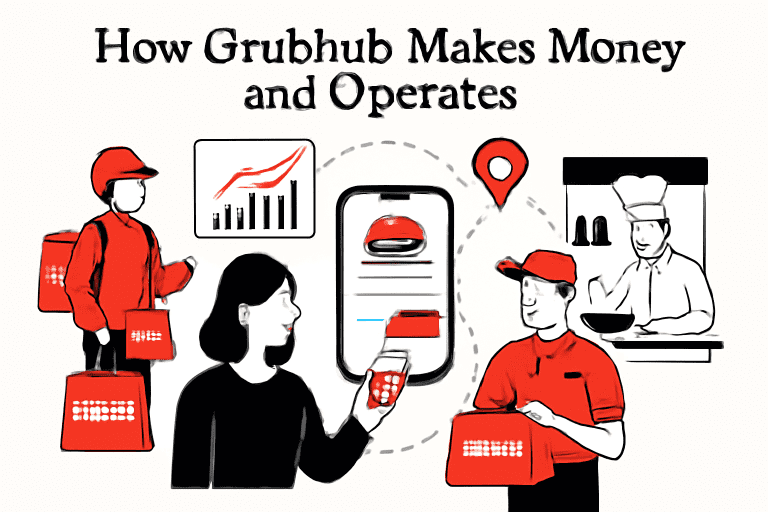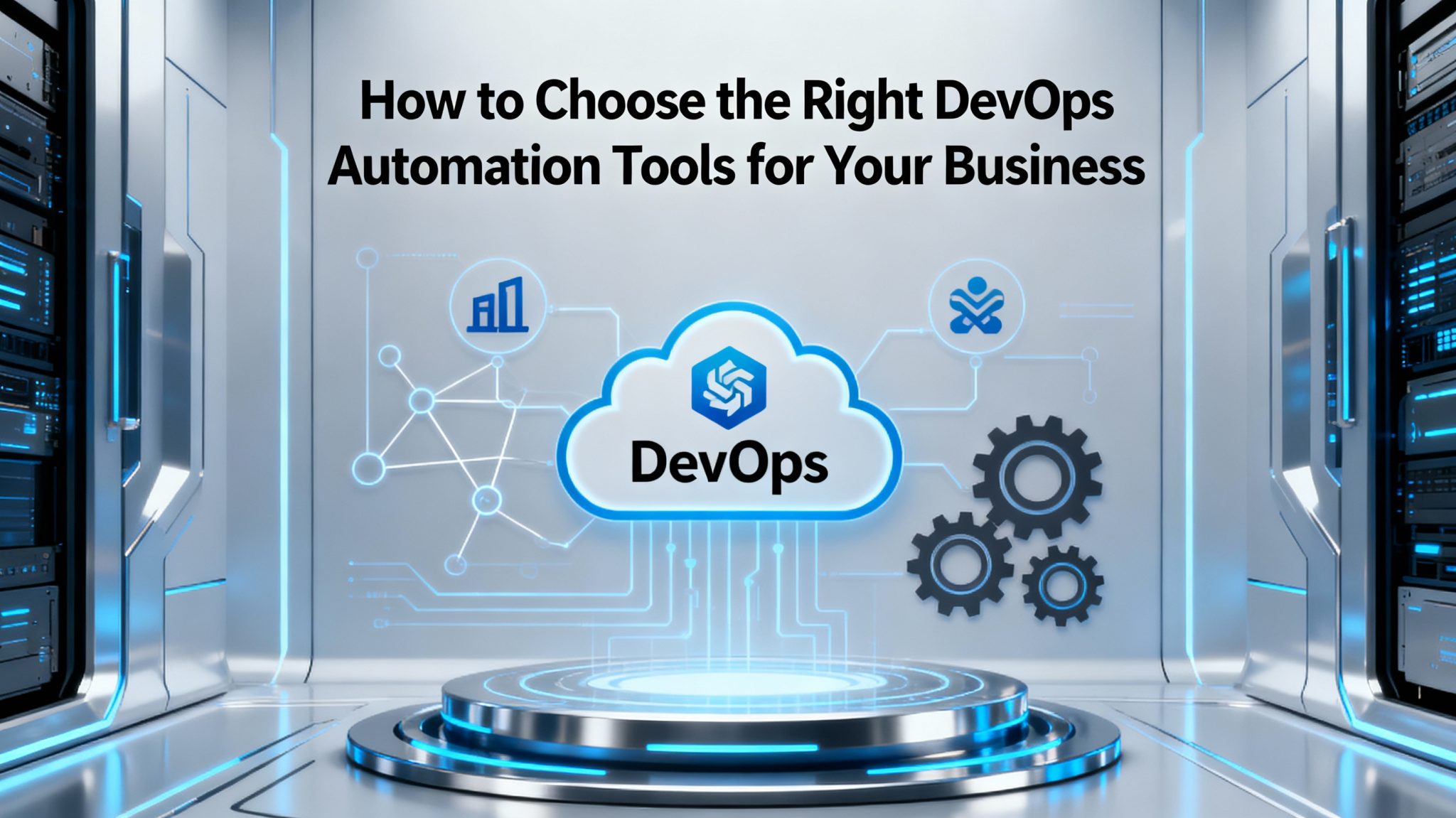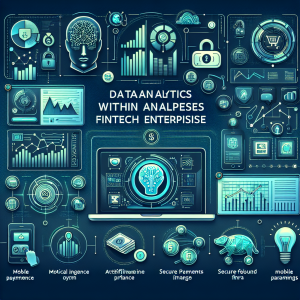Introduction
Grubhub has emerged as one of the leading platforms in the booming online food delivery market, connecting millions of hungry customers with their favorite local restaurants. With seamless access to menus, easy ordering, and quick delivery, Grubhub has redefined the convenience of dining. But what powers this expansive ecosystem, and more importantly, how does Grubhub make money while keeping operations smooth and efficient?
This blog sheds light on the business model and operational framework of Grubhub, detailing its revenue streams, logistics, and technologies that keep this food delivery giant thriving. It also explores the challenges it faces and innovative strategies shaping its future.
For complementary insights on AI-driven business transformation and predictive analytics sustaining such platforms, check out TechOTD’s innovative solutions at TechOTD AI Services and the latest trends in their blog section.
How Grubhub Makes Money: Revenue Streams Explained
Grubhub’s monetization is built around a diversified revenue model suited to its role as a marketplace linking customers, restaurants, and delivery drivers.
1. Commission Fees from Restaurants
Restaurants pay Grubhub a commission, which typically ranges from 10% to 30% of each transaction processed on the platform. This fee offsets Grubhub’s costs related to user acquisition, marketing, technology infrastructure, and customer support.
2. Delivery Fees Charged to Customers
Customers pay a delivery fee based on distance, demand, and order size. This fee covers driver compensation and delivery logistics. Sometimes, promotions or subscription memberships waive or reduce these fees.
3. Service and Processing Fees
Additional service fees applied at checkout include payment processing and platform maintenance costs. These fees can be fixed or percentage-based, transparently disclosed during purchase.
4. Subscription Revenue via Grubhub+
With its subscription service, Grubhub+ members gain benefits such as free delivery and exclusive deals for a monthly fee, providing Grubhub with a steady, recurring revenue stream.
5. Advertising and Promotional Placements
Grubhub offers advertising slots and promotional placements to restaurants looking to boost their visibility on the app and website. These marketing tools generate incremental revenue while helping restaurants acquire more customers.
How Grubhub Operates: The Logistics Behind the Platform
Grubhub connects three critical stakeholders: customers, restaurants, and delivery drivers, optimally coordinating their interactions through advanced technology.
1. Customer Interface
Customers use Grubhub’s mobile apps or website to browse local restaurant options, customize orders, pay online, and track deliveries in real time. The platform offers personalized recommendations leveraging machine learning.
2. Restaurant Partnerships
Restaurants upload their menus and manage orders through a dedicated portal. Grubhub handles the payment process and customer service inquiries, enabling restaurants to focus on food preparation and quality.
3. Delivery Network
Independent contractor drivers, called Grubhub Delivery Experts, receive delivery requests via the app. Intelligent routing algorithms optimize delivery routes, minimizing wait times and enhancing customer satisfaction.
The Technology Powering Grubhub
Grubhub uses a blend of cutting-edge technologies to stay competitive and efficient.
-
Mobile and Web Apps: Intuitive and fast interfaces for seamless placement and management of orders.
-
Real-time Geospatial Ordering: Live GPS tracking ensures efficient and visible delivery processes.
-
Machine Learning & Predictive Analytics: Personalizes customer experiences and optimizes logistic decisions.
-
Secure Payment Systems: Enable safe, smooth financial transactions backed by fraud detection.
For how AI and predictive analytics are transforming business models, see TechOTD’s comprehensive guide:
Predictive Analytics Software Development: Features & Benefits.
Challenges Faced by Grubhub
Operating in the highly competitive and fast-evolving food delivery sphere, Grubhub navigates:
-
Maintaining favorable commission rates while supporting partner restaurants.
-
Managing delivery driver satisfaction and costs amid regulatory pressures.
-
Ensuring on-time, error-free deliveries to meet customer expectations.
-
Competing with other major players like DoorDash and Uber Eats for market share.
Innovation and Future Outlook
Grubhub is investing strategically in:
-
Growing virtual kitchens and branded food concepts.
-
Leveraging AI for better demand forecasting and customer targeting.
-
Enhancing sustainability practices in logistics.
-
Integrating contactless delivery and new payment methods.
Explore more about seamless digital customer experiences enabled by AI:
Seamless Customer Journeys with AI.
Conclusion
Grubhub’s revenue model capitalizes on diverse streams that economically connect restaurants, delivery experts, and consumers. Its technological backbone, combined with an efficient operational framework, supports its position as a leader in food delivery innovation. Navigating challenges while continuously evolving via AI and sustainability initiatives, Grubhub exemplifies the new digital marketplace in the food industry.
To understand how businesses in various domains leverage AI and tech for growth, visit TechOTD’s blog and explore their end-to-end technology services:
TechOTD Services.
FAQs
Q1: What are the main revenue streams for Grubhub?
Grubhub makes money through restaurant commissions, delivery fees, service fees, subscriptions, and advertising.
Q2: Who delivers food for Grubhub?
Independent contractors, called Grubhub Delivery Experts, carry out deliveries coordinated by the platform’s algorithms.
Q3: Does Grubhub offer any subscription plans?
Yes, Grubhub+ offers customers perks like free deliveries for a monthly fee.
Q4: How does Grubhub use AI?
AI personalizes customer recommendations, optimizes driver routing, and predicts order demand.
Q5: What challenges does Grubhub face?
Maintaining competitive commissions, managing drivers, ensuring timely deliveries, and competing in a crowded market.











